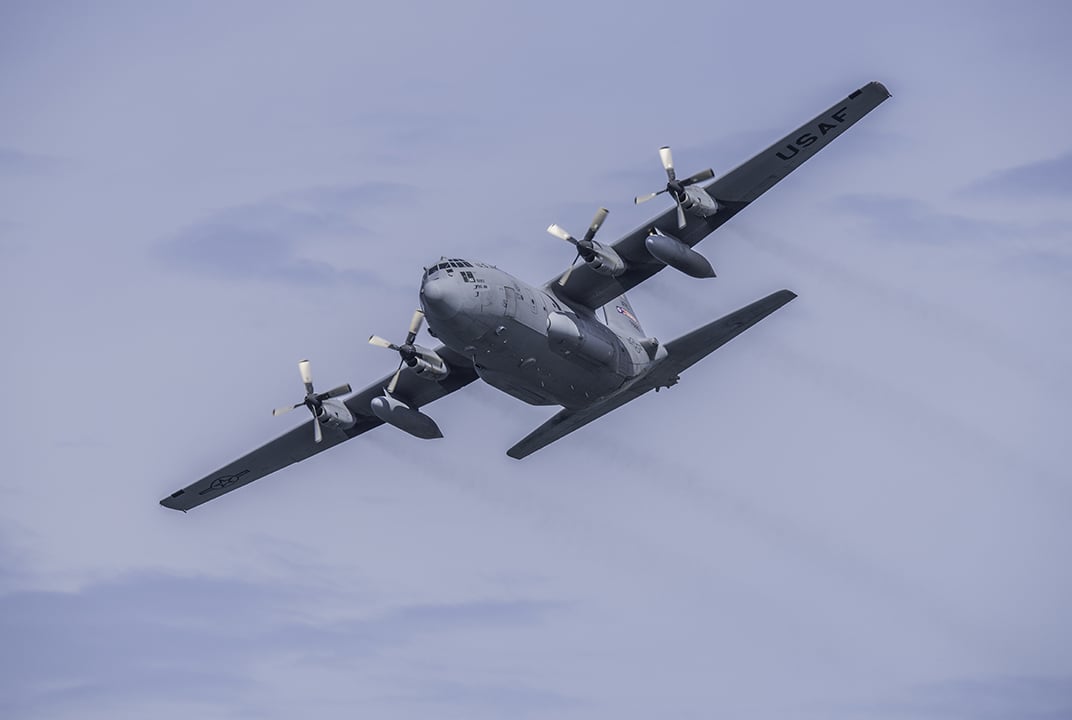Insight | Rugged Logic and Inmarsat: innovating as partners
Rugged Logic and Inmarsat: innovating as partners
Government
Dr Andrew Yoder, President and CEO, Rugged Logic, Inc. describes the joint development of the L-band Advanced Communications Element (LACE) II.
Whether they are military servicemen and women mobilising halfway around the world, first responder team members heading to a disaster or medical staffers responding to a crisis, our customers constantly need to deploy anywhere in the world – quickly. They are not experts in satellite terminals set-up, nor they should be. They are, in fact, frequently hauling a large amount of additional, mission-critical equipment to their destination, which could be hundreds or thousands of miles away from their home location.
This means they need terminals with efficient size, weight and power (SWaP) that are so user friendly that they can set them up in a matter of minutes – regardless of their level of satellite technology expertise. Then, these users need the terminals to provide seamless, secure and reliable high-throughput connectivity on-demand.
At Rugged Logic in Chantilly, Virginia we take pride in the design and manufacture of SATCOM terminals for remote use, often in faraway and harsh conditions. We focus on the quality of our products from beginning to end. We greatly prioritise the understanding of customer needs and how a system will be used. Once we understand these needs completely, we innovate. That is why we embraced the opportunity to work with Inmarsat on the L-band Advanced Communications Element (LACE) II, an ideal choice for military and civilian U.S. government users who are on the move and require resilient, high-rate data feeds to and from small, portable devices, anywhere and anytime.
Earlier this year, our combined efforts resulted in the selection of LACE II as the Top Government Mobility SATCOM Innovation at the Mobile Satellite User Association’s (MSUA) 2020 Mobility Innovation Awards. The award marks a culmination of recognition for our partnership with Inmarsat, but we know there will be more to follow as we continuously seek to improve our offerings to government users. Fortunately, our partnership is a most complementary one: Inmarsat brings a deep knowledge of highly reliable, global mobile connectivity options, while Rugged Logic commands extensive hardware development skills. These come together for the rapid and flexible delivery of a great user experience, with optimal terminal interaction, service quality and availability.
Close collaboration accelerates project completion
Due to the highly collaborative quality of our partnership, we were able to rapidly proceed with the development of LACE II in 2019. Inmarsat’s Joel Machen, Vice President, Product Management, leads the Inmarsat team that worked with us to optimise the terminal – which is as small as a rugged laptop and weighs just 10.8 pounds – for SWaP. We also developed a cooling design that is quite cutting-edge, with technologies that you would typically find in a high-end computer graphics card.
In addition, we made LACE II’s leg design extremely usable and reliable through an interactive design process. Through both 3D printed and machined prototypes, we went through multiple iterations. Joel and his team were always there to review each one and give feedback on refinements to make the next version that much better.
In Joel’s words: “We wanted to do a lot with LACE II, especially in reducing SWaP while still providing the most reliable and fastest connectivity and in-demand capabilities. Usually, a project like this would have taken a year. We were able to proceed from the contract award to initial demonstration in only three months.”
The end product serves as a testimony to the dedication of the Rugged Logic and Inmarsat teams: LACE II is a high-gain, two-way terminal with record-breaking data rates up to 8 Mbps across Inmarsat’s reliable, worldwide L-band space and ground network. The compact, rugged and lightweight design of LACE II supports on-demand and secure connectivity services. It allows deployed teams to receive and return large quantities of video and sensor data while simultaneously maintaining the reliability, ease of use and low cost of ownership provided by Inmarsat’s seamless global L-band network. It operates through any kind of harsh condition and/or weather environment – rain, snow, wind, dirt, mud and dust. This is very uncommon for a terminal delivering at 8 Mbps.
Thanks to our web interface guide, you do not need a user with extensive satellite technology training to get LACE II up and running in the field. The guide walks mission operators through the steps swiftly and easily, with connectivity established in less than two minutes. Through always-reliable Wi-Fi features, they access terminal communications just as they do with their smartphones and laptops. We know we are successful when we have created a product that becomes ‘part of the background’ so users do not have to focus on getting the terminal to work – they just focus on doing their jobs.
We are excited – but not surprised – to see how customers are using LACE II. We have seen them transport it as carry-on luggage, and pack it up in a parachute backpack before they jump out of a plane. They can “set it and forget it” in the most hostile of outdoor environments, or they can place it in the window of their hotel rooms while they work. It supports both single users as well as multi-person teams that need to send and receive a high volume of video feeds.
We are very proud of what we have achieved with LACE II, but we are far from satisfied. As Joel likes to say, “Smaller, faster, lighter – this is what everyone wants.” We are determined to keep moving forward in our partnership with Inmarsat, to make new discoveries about reducing SWaP while expanding upon the possibilities of “what if?” innovation.
About the author
Andrew Yoder is Rugged Logic’s President and CEO. He leads Rugged Logic’s product development and internal operations. He helped found Rugged Logic to build high quality and innovative products for communications and power markets. Prior to Rugged Logic, Andrew has worked in product development for Kratos Defense, Northrop Grumman, Boeing, and the US Government. He earned a BS in Mechanical Engineering at LeTourneau University, and an MS and PhD in Mechanical Engineering from Rensselaer Polytechnic Institute.


